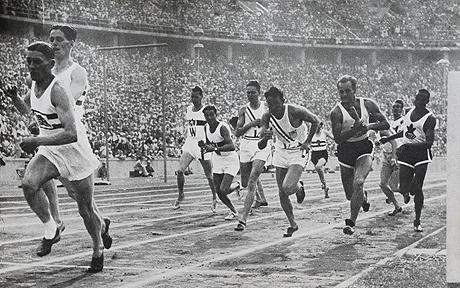What does it take to go from London to Rio on human power? Physically fit, mentally strong, well organized fanatics on a mission.
On January 9 of this year, 2 men and 2 women got on their bikes and cycled over 2,400 miles from Olympic Park in London to Lagos, a port town in southern Portugal. On January 31, they left Lagos and started rowing a 8.6 meter long boat called a Rannoch R45, which can house four or five people uncomfortably, allowing three people to row at the same time. They are currently close to the halfway mark rowing a total of 3,600 miles with the intent of hitting land at Recife, Brazil. From there, they will cycle down the Brazilian coast to Rio de Janeiro, which should take another four weeks.
The mission is raise awareness of the upcoming Rio Olympics, making the literal connection between the past 2012 Olympic venue with the future 2016 venue. But on the way, they are raising funds for cancer research, as well as their journey’s operations.
The four team members are:
- Susannah Cass: a 27-year old PhD student of botany from Dublin
- Jake Heath: a 29-year old podiatrist from Twickenham
- Mel Parker: a 27-year old fundraiser for a children’s charity from Gloucestershire
- Luke Richmond: a 31-year-old cross-fit and Olympic lifting coach from Australia
And their posts on the journey rowing south 24 hours a day are fascinating:
- Luke Richmond, Day 1-3: It was a brutal first day and night, sea sickness had three of us spewing all at once, only Jake seemed un effected. I was sure I was about to die.
- Jake Heath, Day 1-6: The trip so has been life changing already, because I have realized how much you can push your body, if you can keep breaking things down on the small tasks, like the two hour stretch in front of you. I am currently switching in
 with Luke every two hours for 24 hours a day, as we row our way across to Brazil. The girls are also switching with each other, every two hours, but staggered by one hour with us, so everyone gets to spend some time together.
with Luke every two hours for 24 hours a day, as we row our way across to Brazil. The girls are also switching with each other, every two hours, but staggered by one hour with us, so everyone gets to spend some time together. - Jake Heath, Day 7&8: We have been on what seems like a giant conveyor belt of water and big waves. It’s all good and going in the right directions for us to reach the canaries in two days and then push on to Cape Verde straight after. The sea swells are pretty big and at night they can catch you off guard and just crash over your head. Last night Captain Susannah caught a high wave, which went all over her, but I luckily was out of the rowing seat having a stretch and remained bone dry. Carbon copy thing happens to Mel the next I shift, this time I was getting a drink and avoided it once again. I know what you are thinking? I promise I am actually doing some of the rowing!
- Mel Parker, Day 18: Imagine your bed is 1m by 1m, around your little square of bed you have everything tied to the walls – your wardrobe, toiletries and a few days food. Above you you’ve got all the comms and electronics you could need to get you safely across an ocean. Behind your head you have the worlds noisiest neighbour, which sounds like a robotic Jurassic park, but is working hard to make sure you’re steering in the right direction.
If you’re interested in making a donation to help the MacMillan Cancer Support organization fight cancer, go to this link.
If you’re interested in following the exploits of this fantastic four, here is a link to their blog – Row2Rio. And stay tuned!























You must be logged in to post a comment.